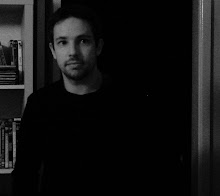Roger Caillois wasn't the only figure involved with Surrealism - however peripherally - not to concur with Breton's insistence that the marvellous and scientific research were incompatible. Jean Painlevé (1902-1989) made over two hundred films during his lifetime, mostly natural history documentaries, many of which were aimed at scientific audiences rather than the general public. He was one of the first to film wildlife underwater, and his best-known film captured male seahorses giving birth. In 1924 he contributed a brief article, "Neo-Zoological Drama," to the journal Surréalisme, a "surreal melodrama" of marine organisms described in impenetrable scientific jargon, and Man Ray used footage of a starfish taken by Painlevé in his 1928 film L'Etoile de mer.
Painlevé believed that there was a risk that understanding nature could potentially "strip away its miraculous qualities," although that needn't detract from its "poetry" which "subverts reason and is never dulled by repetition." He argued that the human imagination produces "weak revelations" in comparison with nature:
We see offspring who slowly substitute themselves for their parents by resorbing them; elsewhere, we see parents decompose in their children. We witness organs of propulsion becoming jaws, an eye passing from one side to the other or fusing to the one next to it; in some, all the organs disappear. While some young begin with identical forms, they grow into adults who look nothing like each other. So wildly different are the stages in such a species that if one does not closely monitor their transformations, one could easily be fooled into believing these two individuals are not even related. Indeed, a dully coloured, carnivorous larva might grow into a dazzling coloured vegetarian who, when fully grown, no longer has a mouth and fasts until death.
In Science is Fiction: The Films of Jean Painlevé, Ralph Rugolf writes that Painlevé's films are "spooked by the spectre of the inhuman"; the disconcertingly mindless movement of microscopic cilia disturb because they are "functional and reflect an intelligence - environmental and evolutionary - that is far vaster than our own puny claim in that area." The uncertainty as to whether or not something is sentient is, Rugoff points out, one definition of the uncanny. Painlevé's work leaves us "with a haunting sense of our own strangeness even as we gape in wonder at nature's bizarre marvels." As the narrator of Acera, or the Witches' Dance informs us, for the aquatic molluscs that are the film's subject, "as for other animals, dance is a way to find a partner." This isn't an inappropriate projection of human qualities onto another species, but an observation of how we resemble the rest of the animal kingdom: once again, it's a case of inverted anthropomorphism.
In his 1947 article "Science Film: Accidental Beauty" the critic André Bazin wrote that "Tanguy, Salvador Dalí and Buñuel have only distantly approached the Surrealist drama in which the late lamented Doctor de Martel, preparing for a complicated trephination, first sculpts on the nape of a neck - shaved and naked as an eggshell - the outline of a face." For Bazin, the "inexhaustible gift" of the science film was that "[a]t the far end of inquisitive, utilitarian research, in the most absolute proscription of aesthetic intentions, cinematic beauty develops as an additional supernatural gift." Painlevé's 1978 film Liquid Crystals documents the effects of temperature and pressure on the molecular structure of liquid crystals found in caffeine, urea and acetic acid. Initially made for research purposes, Painlevé re-edited it for a general audience. The result is, as Scott MacDonald has noted, reminiscent of abstract animations by the likes of Oskar Fischinger and Harry Smith. Painlevé found a score he had previously been given by François de Roubaix to be a perfect fit; it was, he said, "a cosmic coincidence."
Painlevé did not attempt to exclude aesthetics or morality from his scientific vision, and was well aware that science could not be fenced off from other areas of life: At the end of The Vampire (1945), its Chiropteran star, the "brown pest," carrier of diseases, gives "the salute of the vampire," and consequently Painlevé had to escape persecution by the Nazis, fleeing to Spain using self-invented scuba-diving gear. Nature could also serve as an example to humanity - the fact that it was the male seahorse that gave birth and looked after the young was, Painlevé said, "a splendid way of promoting the kindness and virtue of the father, while at the same time underlining the necessity of the mother. In other words, I wanted to re-establish the balance between male and female."




























.jpg)

















